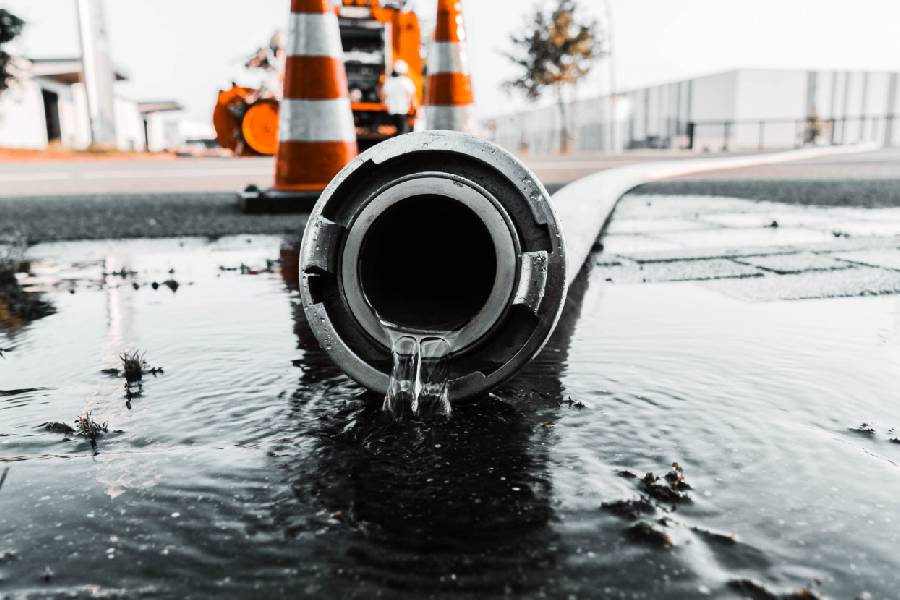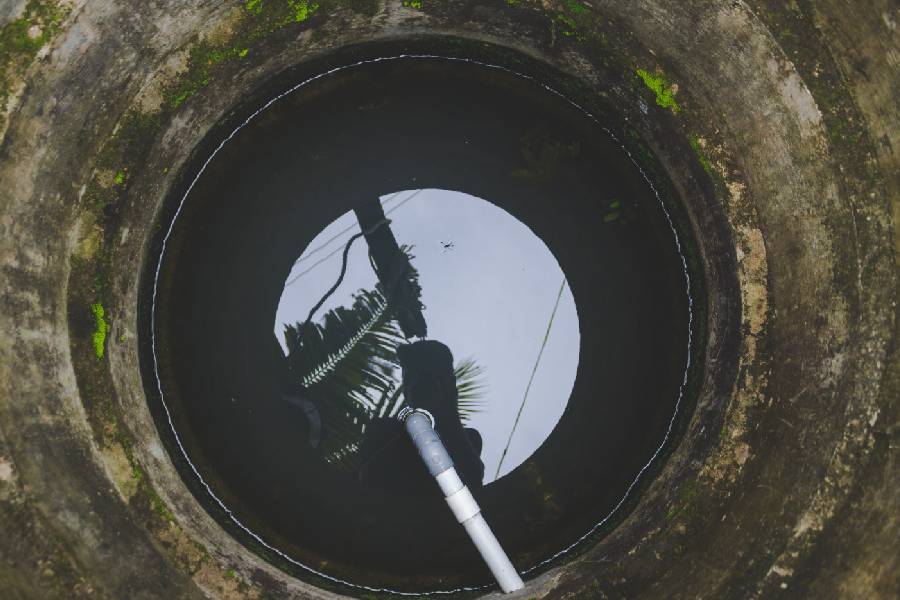Water, the elixir of life, flows seamlessly from our taps. It quenches our thirst, nourishes our crops, and supports industries. It’s easy to take this essential resource for granted. Yet, there is a vast and intricate network designed to deliver water to our homes and communities. So, what is water infrastructure? Why is water infrastructure important?
We will explore the remarkable world of water infrastructure. This is a vital but often underappreciated aspect of civil engineering. We are passionate about bringing this critical topic to the forefront, uncovering its significance, and sharing insights into its design, construction, and maintenance.
Let’s discover more!

What Is Water Infrastructure?
Water infrastructure is the essential framework that enables the continuous flow of clean, potable water to our homes, businesses, and industries. It also helps with the safe disposal and treatment of wastewater.
Furthermore, it constitutes the lifeline of modern civilization. Water infrastructure is responsible for safeguarding public health, supporting economic growth, and preserving the environment.
At Cypress Environment & Infrastructure, we recognize the profound significance of water infrastructure in our daily lives. We also understand the pivotal role it plays in civil engineering.
Key Components of Water Infrastructure
Water treatment plants
Water treatment plants are the initial gatekeepers of the water infrastructure network. These facilities take in raw water, whether from surface sources like rivers or underground wells, and subject it to a rigorous treatment process.
This process involves various stages, such as coagulation, sedimentation, filtration, and disinfection, to ensure the water becomes safe for consumption. It’s a complex combination of chemical and physical processes that transform natural water into a potable form.
Distribution systems
After purification, the treated water goes through a vast network of distribution systems. These systems consist of an intricate web of pipes, pumps, and storage tanks, ensuring water reaches our homes and workplaces. The pressure within the distribution network is meticulously controlled to guarantee a steady flow, even during periods of high demand.
Wastewater management
On the flip side of clean water provision lies wastewater management. This critical component of water infrastructure is responsible for collecting and treating the wastewater generated from our daily activities.
Wastewater treatment facilities employ advanced processes to eliminate contaminants and safely release treated water into the environment. This minimizes its adverse effects on ecosystems.
Reservoirs and dams
Reservoirs and dams are fundamental elements of water infrastructure. They are used for storing large volumes of water. Dams and reservoirs serve multiple purposes. They provide a stable water supply.
They also generate hydroelectric power and regulate flood control. These structures are often nestled in scenic landscapes. Overall, they play a crucial role in managing water resources.
The Role of Water Infrastructure in Society
The role of water infrastructure in society is multifaceted. It ensures the availability of clean drinking water for our communities, supports industries and agriculture, and protects public health by effectively managing wastewater.
It underpins economic activities and offers a lifeline during natural disasters, droughts, or emergencies. Simply put, water infrastructure is the invisible hand that sustains modern society’s functioning. Water infrastructure doesn’t merely serve our needs today; it’s an investment in the future.
Moreover, the world faces challenges related to population growth, climate change, and resource conservation. So, robust and resilient water infrastructure is critical. This ensures sustainable water resources.
The Design and Construction Process
1. Planning and feasibility studies
Planning and feasibility studies represent the initial stages in the development of water infrastructure. During this phase, Cypress Environment & Infrastructure conducts a comprehensive assessment to determine the project’s viability.
Assessment of water needs
Understanding the specific water requirements of the area is crucial. This involves considering factors such as population growth, industrial demand, and environmental considerations.
Site selection
Careful site selection is imperative. Our engineers evaluate locations for water sources, treatment plants, and distribution networks to minimize environmental impact and optimize accessibility.
Environmental impact assessment
A thorough environmental impact assessment is conducted to ensure compliance with regulations and minimize harm to ecosystems. This step aligns with Cypress Environment & Infrastructure’s commitment to sustainable practices.
2. Engineering and design
The engineering and design phase is where the project takes shape. During this stage, our team of experts leverages cutting-edge technology and industry knowledge to create detailed plans and blueprints.
Technical specifications
The design phase involves developing intricate technical specifications for each infrastructure component. This includes determining the size and capacity of water treatment plants, the layout of distribution pipelines, and the parameters of wastewater treatment facilities.
Incorporating sustainability
We prioritize sustainability at Cypress Environment & Infrastructure. Our designs incorporate eco-friendly and resource-efficient technologies to minimize environmental impact and energy consumption.
Regulatory compliance
We ensure that all designs adhere to local, state, and federal regulations. This includes compliance with environmental standards and public health requirements.

3. Construction and installation
Once the planning and design stages are complete, it’s time to move on to construction and installation.
Expert construction teams
We work with skilled construction teams that specialize in water infrastructure. They bring designs to life, constructing treatment plants, laying pipelines, and installing distribution networks.
Quality materials and equipment
We use high-quality materials and equipment to ensure the longevity and functionality of the infrastructure. This guarantees that the system operates smoothly and efficiently for years to come.
4. Quality control and safety measures
Quality control and safety measures are of paramount importance throughout the entire process.
Continuous inspections
We conduct thorough inspections and quality control checks at every stage, from initial construction to final implementation. This guarantees that every component meets our rigorous standards.
Safety first
Cypress Environment & Infrastructure places a strong emphasis on safety. We implement safety measures and protocols to safeguard workers, the environment, and the community during construction and throughout the infrastructure’s operational life.
What Are the Challenges in the Water Infrastructure?
Even with well-planned and expertly constructed water infrastructure, some challenges must be addressed:
Aging infrastructure
Many countries, including the United States, are grappling with aging water infrastructure. Many existing systems were built decades ago and require maintenance, repair, and, in some cases, complete replacement. Cypress Environment & Infrastructure recognizes the significance of investing in the modernization of these systems to ensure their continued reliability.
Population growth
As our communities grow, the demand for water increases. Ensuring that our infrastructure can meet these growing needs is a significant challenge. So, we are at the forefront of developing innovative solutions to manage and distribute water efficiently to meet the demands of expanding populations.
Climate change
The effects of climate change are evident, with shifts in precipitation patterns, increased frequency of extreme weather events, and rising temperatures. These factors place additional stress on water infrastructure systems. We acknowledge the importance of developing resilient infrastructure and adapting to these changing conditions.
Resource management
Sustainable water resource management is fundamental to environmental and public health. Balancing water supply, demand, and conservation practices is a continual challenge. Cypress Environment & Infrastructure is committed to sustainable water management and resource-efficient practices to address this challenge.
Technological advancements
Embracing emerging technologies is crucial to enhancing the efficiency and effectiveness of water infrastructure. This includes incorporating advanced monitoring systems, data analytics, and automation to optimize operations and minimize waste.
The Way Forward
Cypress Environment & Infrastructure is aware of the challenges water infrastructure faces. We view these challenges as opportunities to advance our commitment to providing sustainable, efficient, and resilient water infrastructure.
Our engineers continuously strive to enhance existing systems, develop innovative solutions, and integrate modern technologies to address these challenges head-on. As climate change and population growth present complex problems, our focus remains unwavering.
We aim to overcome the potential obstacles and leave the world with dependable and sustainable water infrastructure for future generations. We do that by utilizing cutting-edge technologies, optimizing resource management, and developing and building resilient infrastructure.

Conclusion
What is water infrastructure? Water infrastructure forms the critical backbone supporting modern civilization. This complex network of treatment plants, distribution systems, and wastewater management facilities ensures a safe and steady water supply while protecting public and environmental health.
Despite various challenges, water infrastructure remains essential for communities worldwide. As population growth and resource constraints continue, understanding what water infrastructure is and investing in it becomes imperative.
With expertise in designing resilient and sustainable infrastructure, Cypress Environment & Infrastructure stands at the forefront of advancing water systems. We know that reliable water infrastructure is vital for human progress, economic prosperity, and ecological well-being.
